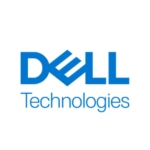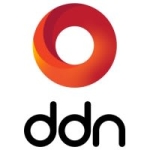We have PowerMax 2000. It is for our clients. We have two PowerMax in our environment. One is in production, and another one is on the DR site. We have to replicate the data from production to that one.
It is important for our clients that PowerMax provides NVMe scale-out capabilities. They are also getting great performance as compared to the old storage array model.
Provisioning is faster and immediate. We can do immediate allocation and configuration. As compared to the old storage array model where it used to take half an hour, in PowerMax, we can do it in 5 to 10 minutes. It doesn't take that much time, and there isn't much delay in the PowerMax array.
Our workload is reduced because we are not dealing with any issues. We are not facing many issues on the PowerMax side as compared with the previous one.
Based on our experience with VMAX, there isn't any hardware failure or something like that in PowerMax. Performance-wise also, everything is fine. We haven't faced any performance issues or any hardware failure. Its performance is great as compared to VMAX. Its I/O per second rate is higher than the old model.
We can use it block-wise, and we can also use it at the file level. It is good for any environment.
I would like to see more development in the cloud environment. It would be good if it comes in the cloud kind of setup.
I have been using this solution for two and a half years.
It is very stable. It has very few failures. In the last two and a half years, there is only one failure that I have faced in PowerMax. That was because one of the ports went down. The port was replaced within two days or something like that by an EMC engineer. Hardware failure is very rare in PowerMax. Previously, in VMAX, multiple drives used to fail within a day itself.
In our setup, we are just using less than one petabyte. In the PowerMax itself, we are using 130 or 150 TB. For scalability, it is the best option. We can directly connect the PowerMax array with the other storage array devices, such as a USB, without any performance issues.
We don't have much involvement in it. Whenever the customers need any help, they ask for some help from our side, and accordingly, we provide the help. They usually involve us only when they have any doubt. The entire configuration is done by EMC itself, so we are not a part of the implementation.
We don't have any involvement in the pricing. We are just from the backend support team for the PowerMax array. If any expansion is required, we will just inform the customer, and the customer directly contacts the EMC person. They discuss and finalize the dealings, and we are not involved in those dealings.
It is a good solution for any environment. You won't face any issues in terms of performance and stability.
SRDF has helped to reduce storage costs, but I can't provide the numbers. We don't handle that aspect. We are from the support team, and for capacity, there is a separate team in our environment. That capacity team takes care of the capacity and does the daily basis and monthly basis kind of calculation. We are just supporting the existing environment, and we have to maintain its availability.
We have not been able to consolidate open systems, mainframe, IBM block, and file or virtualized data with cloud-connected storage using PowerMax. That's because currently in our environment, there isn't a separate cloud, and the cloud is not connected with this PowerMax.There is also no mainframe server. We have a separate storage array for IBM in our environment. Similarly, EMC is also separate.
We have not used PowerMax's NVMe SCM storage tier feature and PowerMax's built-in QoS capabilities for providing workload congestion protection. We have also not used PowerMax's Metro Smart DR, also known as MetroDR.
PowerMax would be useful for enterprise-level storage or mission-critical IT workloads, but in our environment, we only have the basic model, which is PowerMax 2000. As per my understanding, it will be good and useful for mission-critical applications.
I would rate it a nine out of 10. I am not giving it a 10 because day by day, technology is improving, and there might be another solution that is better than this. Even EMC might find another solution and introduce it.











